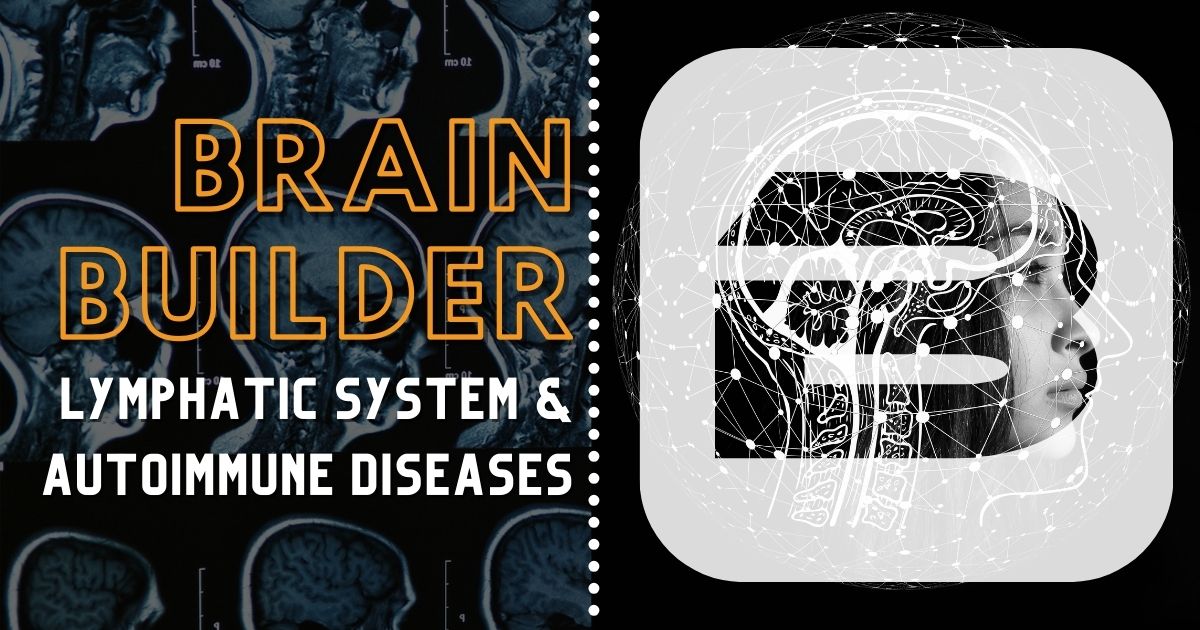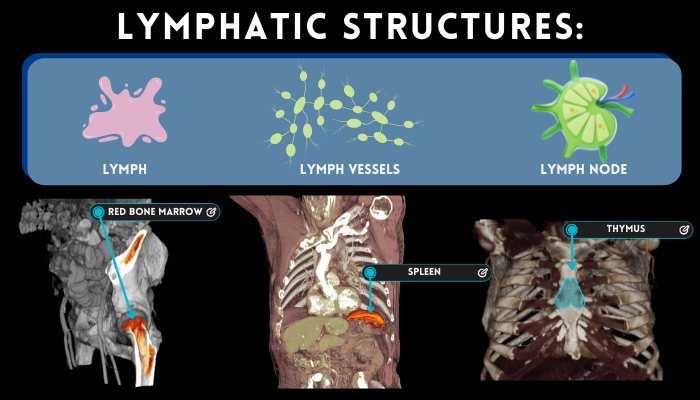The Lymphatic System and Autoimmune Diseases
by Susan Terry, MS | October 18, 2024

Case study video explaining the lymphatic system and autoimmune diseases!
Use the button below to schedule a demo to learn about our quizzes, flash cards, and other anatomy resources that support this Brain Builder!
Schedule a Demo
Overview
When one is asked to list the systems in the human body, the lymphatic system is usually one of the last ones mentioned, and it is often forgotten. The lymphatic system is important, particularly for individuals grappling with autoimmune diseases. According to the National Institutes of Health, approximately 8% of the United States population is living with an autoimmune disorder, and over 80% of those people are women. Responsible for clearing excess fluid and inflammation from inflamed tissues, the lymphatic system serves as a vital component in combating autoimmune-related symptoms, including tissue inflammation and swollen lymph nodes. In this Brain Builder, we will delve into the intricate relationship between the lymphatic system and autoimmune diseases, going over the system’s structure, function, and roles in our immune responses.
Background Information
The lymphatic system comprises a network of lymph, lymph vessels, and lymph nodes, alongside accessory lymphoid organs such as red bone marrow, the spleen, and the thymus gland. Lymphocytes are made in the bone marrow. There are two kinds of lymphocytes, B cells which make antibodies, and T cells which help kill tumor cells and help control immune responses. The lymphatic system helps the body get rid of disease-causing microorganisms and harmful cells. The antibodies created by the B cells will attack viruses and bacteria. Memory B cells help the body by remembering every antigen it has been exposed to and work to attack any invading antigens.
In addition, the lymphatic system is responsible for bringing excess fluid from tissues and returning it to the blood. Blood is under pressure because the heart contracts to pump blood through the body. This pressure can cause excess fluid to leak out of capillaries and into the tissues. The lymphatic system picks up this excess fluid by acting like a sponge. The excess fluid is moved through the lymph vessels by contractions of muscular tissues. The fluid is returned to the blood through the thoracic duct which connects to the subclavian vein located under the clavicle.
While you can live without your spleen, you are at a higher risk of contracting an infectious disease. The spleen plays an important role in removing bacteria that invade the body. The thymus gland is located in front of your heart. It starts small in size, increases in size until puberty, and then decreases in size as you age.

Core Concepts
Autoimmune diseases have been studied extensively and are characterized by the immune system’s misguided attack on healthy cells within the body.
With over 80 identified types, these conditions may present through various symptoms such as fatigue, general malaise, inflammation, joint pain, and rashes. The list below details the distinctive effects of five different autoimmune diseases.
- Alopecia areata - The immune system attacks hair follicles, causing hair loss
- Diabetes mellitus type 1 - The immune system attacks and destroys the cells in the pancreas that make insulin, so cells are unable to absorb glucose
- Celiac disease - The immune system creates inflammation in the intestines when gluten is consumed causing bloating, gas, and diarrhea.
- Multiple sclerosis - The immune system attacks and destroys the insulating tissue around neurons, which causes nerve impulses to move more slowly down the neuron.
- Rheumatoid arthritis - The immune system attacks the joints and joint linings, causing inflammation.
While there are some autoimmune diseases whose mechanism of damage is not entirely explained, it is known that the lymphatic system and lymphocytes play a large role. The lymphocyte B cells activate the antibodies, but in the case of an autoimmune disease, these may be autoantibodies that attack and destroy healthy cells. The lymphocyte T cells activate the immune system response, causing inflammation. Inflammation of joints, lymph nodes, and limbs indicates lymphocytes are at work.
Causes
There are definite correlations between autoimmune diseases, genetics, some medications, and some lifestyle choices:
- Exposure to bacteria or viruses
- Genetics
- Exposure to chemicals
- Smoking
- Some medications
Diagnosis
For doctors, diagnosing someone with an autoimmune disease is a challenge. To accurately identify the condition, doctors employ a combination of clinical evaluation, laboratory tests, and imaging studies. Physicians typically begin by conducting a thorough medical history review and physical examination to assess symptoms, family history, and overall health.
Various blood tests are utilized to detect specific markers of autoimmune activity. Doctors may order the following tests:
- Complete blood count - A low RBC count indicates a condition that is destroying RBCs, high WBCs indicate infection and low WBCs may indicate the presence of a virus.
- Antinuclear antibody test - A positive test indicates the presence of autoantibodies that attack the patient’s cells and can indicate an autoimmune disease.
- Erythrocyte sedimentation rate - This test shows how fast your red blood cells settle out of solution. A high rate indicates inflammation and a possible autoimmune disease.
- Specific antibody test - Different autoimmune diseases may produce different autoantibodies. The doctor will order specific antibody tests for your probable autoimmune disease. Positive tests indicate you have those antibodies and an autoimmune condition.
Doctors must also rule out non-immune diseases like cancers, intestinal blockages, or many other options through comprehensive examinations and differential diagnosis. A patient may also be sent for X-rays or CT scans to give the doctor more information about what is present internally.
Treatments
- Symptom management
- Reducing pain and inflammation
- Treating the main problem caused by the autoimmune disease - insulin is an example
- Lifestyle modification such as exercise or changing diet
You can live a relatively normal life with an autoimmune disorder. As technology advances, so does the ability to diagnose autoimmune disorders. You may have to take insulin, and anti-inflammatory drugs, modify your lifestyle, or change your diet.
Key Terms
Autoimmune disease - a condition where the immune system attacks and destroys healthy body cells
Lymphocyte - a type of WBC that seeks and destroys viruses, bacteria, and fungi
Antibody - protein produced in response to exposure to an antigen and will activate each time the body is exposed to the antigen
Malaise - general feelings of illness
Gluten - a structural protein found in grains that can trigger an immune response in people who have celiac disease
Celiac disease - immune response to gluten which can damage the digestive tract
Schedule a demo today to learn how you can incorporate BodyViz into your classes and give your students the opportunity to practice using the information from this Brain Builder on real patients with authentic 3D dissection!
Schedule a Demo
Helpful Links: